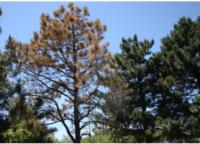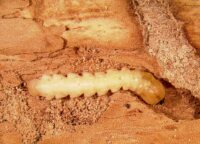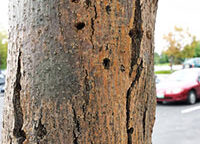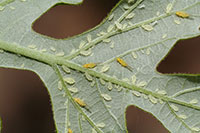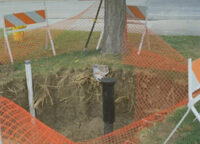- 12, 12, 2023
- Comments Off on Salt Tolerant of Common Landscape Trees of the Colorado Front Range
- By cjacobson
Salt Tolerant of Common Landscape Trees of the Colorado Front Range
Print this fact sheet by Y.L. Qian and J.E. Klett (11/23) Quick Facts: Selecting the Right Tree Many communities in Colorado are increasingly using non-potable saline water for irrigating large landscapes, a practice that has led to rising salinity issues. When faced with salinity problems in soil and irrigation water, selecting the right tree species for […]
Take a Tour- 10, 07, 2020
- Comments Off on Columnar and Fastigiate Trees for CO Landscapes – 7.427
- By admin
Columnar and Fastigiate Trees for CO Landscapes – 7.427
Print this fact sheet by Eric Hammond, James Klett, and Alison S. O’Connor* (9/20) Quick Facts… Trees provide shade, beauty, and protection from harsh winter winds. Columnar and fastigiate tree forms provide the benefits of larger trees, and can fit into smaller landscapes. Trees with narrower forms can be evergreen or deciduous. Often, columnar trees can […]
Take a Tour- 05, 15, 2020
- Comments Off on Insecticides Used to Control Emerald Ash Borer on Residential Shade Trees – 5.626
- By admin
Insecticides Used to Control Emerald Ash Borer on Residential Shade Trees – 5.626
Print this fact sheet by W.S. Cranshaw** (2/20) Quick Facts…. Emerald ash borer wounds ash trees by tunneling areas under the bark. When wounds become extensive, trees show symptoms of decline and, ultimately, are usually killed. Several types of insecticide applications can control emerald ash borer. Emerald ash borer insecticides move systemically in plants and […]
Take a Tour- 01, 25, 2019
- Comments Off on Recognizing Wood Boring Insects of Ash Trees in Colorado – 5.620
- By admin
Recognizing Wood Boring Insects of Ash Trees in Colorado – 5.620
Print this fact sheet by W.S. Cranshaw* (1/19) Quick Facts… Being able to recognize the wood boring insects found in a tree is essential when making informed decisions on the need for control. In most of Colorado, the most important wood borer found in ash trees is the lilac/ash borer. It makes an irregularly round […]
Take a Tour- 08, 10, 2015
- No Comments.
- By admin
Aphids on Shade Trees and Ornamentals – 5.511
Print this fact sheet by W.S. Cranshaw 1 (1/19) Quick Facts… Aphids are found on almost all types of plants and a few species can cause plant injury. Some aphid species can curl the new leaves of some types of plant. Feeding aphids excrete honeydew, a sticky fluid that can cause nuisance problems. Natural enemies […]
Take a Tour- 07, 20, 2015
- No Comments.
- By admin
Native Trees for Colorado Landscapes – 7.421
Print this fact sheet by J. Klett, B. Fahey and R. Cox and I. Shonle* (1/18) Quick Facts… A Colorado native tree can be described as existing in Colorado prior to European settlement. Native plant communities make Colorado visually distinct from the eastern, southern or western United States. Native plant gardens are wildlife habitats and each plant […]
Take a Tour- 07, 17, 2015
- No Comments.
- By admin
Xeriscaping: Trees and Shrubs – 7.229
Print this fact sheet by J.E. Klett, C.R Wilson and S. Carter* (12/16) Quick Facts… Select trees and shrubs for xeric landscapes based on both adaptation to Colorado’s climate and the ability to prosper in reduced water situations. Assess site soil, drainage and exposure before selecting trees and shrubs. Apply adequate water during the first […]
Take a Tour- 07, 17, 2015
- No Comments.
- By admin
Protecting Trees During Construction – 7.420
Print this fact sheet by C. Dennis and W.R. Jacobi* (8/20) Revised by E. Hammond** Quick Facts… Soil compaction and grade changes adversely affect tree root health, and can lead to branch dieback and tree death. Prior to starting construction activities, evaluate existing trees in the area to see if preservation is worthwhile and feasible. […]
Take a Tour- 07, 17, 2015
- No Comments.
- By admin
Trees and Shrubs for Mountain Areas – 7.423
Print this fact sheet by J. Klett, R. Cox, I. Shonle and Y. Henson* (4/18) Quick Facts… Consider the length of the growing season, soil characteristics and exposure before selecting trees and shrubs for specific sites. Plant trees in the spring. Plant shrubs in the spring until late summer. Mulch the root area to help delay […]
Take a Tour- 07, 16, 2015
- No Comments.
- By
Lilac/Ash Borer: A Common Wood Borer of Colorado’s Street Trees – 5.614
Print this fact sheet by W. Cranshaw* (5/14) Quick Facts… Figure 1. Lilac/ash borer larvae tunneling exposed from under the bark. Photograph by David Leatherman. Figure 2. Tunneling produced in the base of a recently transplanted “Autumn Purple” white ash by the lilac/ash borer. Figure 3. Irregularly round exit holes produced when adult lilac/ash borer […]
Take a Tour
